VIEW PART TWO HERE:
http://www.horsemagazine.com/thm/2015/05/george-morris-part-two/
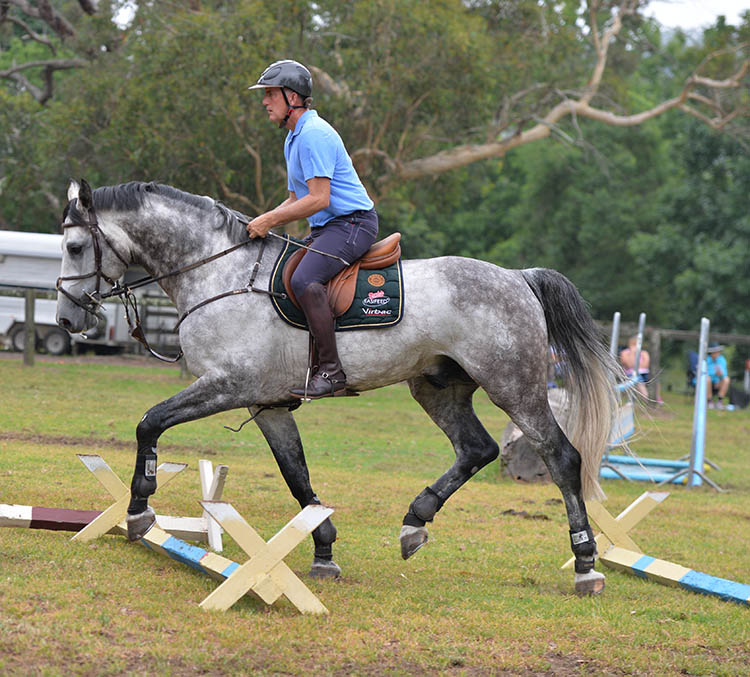
Chris, his thirtieth time at a George Morris clinic, this time with Cassiago
STORY BY CHRIS HECTOR & PHOTOS BY ROZ NEAVE
Can you imagine, an instructor who hates every innovation of the past twenty years when it comes to tack, and riding style, and the structure and direction of the sport? An instructor who actually tells it like it is instead of being ‘nice’, so the rider comes back for more, worse still, an instructor who is more passionate about actually teaching than using teaching as a marketing tool to flog an even more expensive horse to the pupil…
You know the really crazy thing? This unfashionable teacher just happens to be the most successful showjumping coach of all time, and has as his pupils some of the most brilliant riders in the world today. I guess that is why George Morris can command a lineup of riders that represents the crème de la crème of Australian showjumping.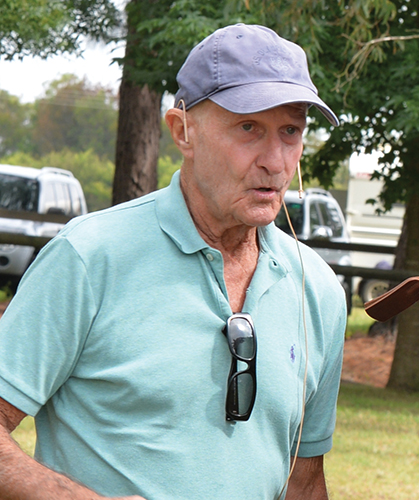
And there they were: current Australian showjumping champion, David Cameron, the new star on the World Cup circuit, Jess Brown, Gabi Kuna fresh from her win in the Oaks Seven Year old championship with her mare Cristalline, exciting young talents like Ben Blay, Rod McQueen, Sam Buchanan, Stephen Dingwell, Amanda Madigan, Brooke Campbell and Kate Roots.
Along with some of the oldies but goodies like Colleen Brook, Vicki Roycroft, Andrew Inglis and Chris Chugg…
For Chuggy, this annual tune up is a necessity:
You keep coming over and over and over again, do you learn different stuff each time?
“No, it is more of a refresher course. It is the only clinic I do, year after year, and for 29 years, George has been reminding us about keeping the horse straight, and forward into the outside rein. That’s what trainers do, they remind riders what they forget. We are competition riders, and I try to be a trainer and a competition rider but sometimes competition riding takes over. You don’t spend a little more time on the flatwork when you are working numbers of horses, but the George Morris clinic is money well-spent, I would like to see him four times a year.”
Do you then go home and attack your flatwork with the same diligence that he demands here?
“I do, I probably do more over the first week after the clinic. Then I watch my videos during the year and work with the horses on how much they need to go sideways and forward, but the most important thing, I think, that’s not practiced enough, is leg-to-hand contact, that makes everything smooth. It is what he helped me with a lot the first time I worked with him with Mr Currency. I brought a young C-Grader into his clinic and straight away he turned it into a Grand Prix horse just by reminding me what contact is – and the rest is history.”
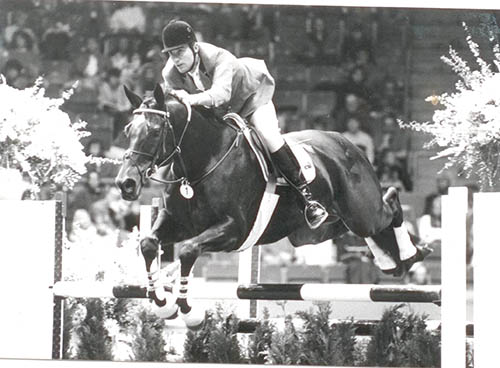
At the World Cup Final with Mr Currency
“I said to George at the end of that clinic ‘you just made me a lot of money’. He showed me the horse was better than what I thought he was, and gave me a program for the next 15 months, and there was a big rainbow at the end of that 15 months, a World Cup final. I think George is invaluable; he has made me a lot of money over the years!”
But the contact is really only the visible manifestation of all the other things isn’t it? Contact is only an expression that the horse is accepting your aids and that it is soft and properly gymnasticised and comfortable in the work…
“It is a hard thing to do. I find the hardest thing to do is a half-halt and keep the horse on contact. I want to do other things rather than just be quiet, warm the horse up at the walk… do all those things we know we should do. I think that George hasn’t changed, he is still on the same basics, you hear the same if you watch your old tapes, everything is exactly the same terminology. And that is his job as a trainer, to watch his competition riders and make sure they don’t cut corners…”
more follows
Do you think also though, it is harder here in Australia, because it is easier to be a superstar in Australia?
“You are a big fish in a small pond here, that’s why trips to New Zealand and trips to Asian countries are great trips to go away on and cut your teeth on different horses. I make a point of going to Europe every year, I didn’t get to ride in Normandy this year, but I watched and I learned more from watching, almost as much as I did from riding in Kentucky. I think it is what most people have got to do. You have to get outside Australia, which the Kiwis are really good at doing. All they want to do is vacate New Zealand, go and earn their money, do their trade and enjoy the international sport, whereas I think Australians are a little complacent, they don’t really get a trip away until they get their first World Cup horse, like I did.”
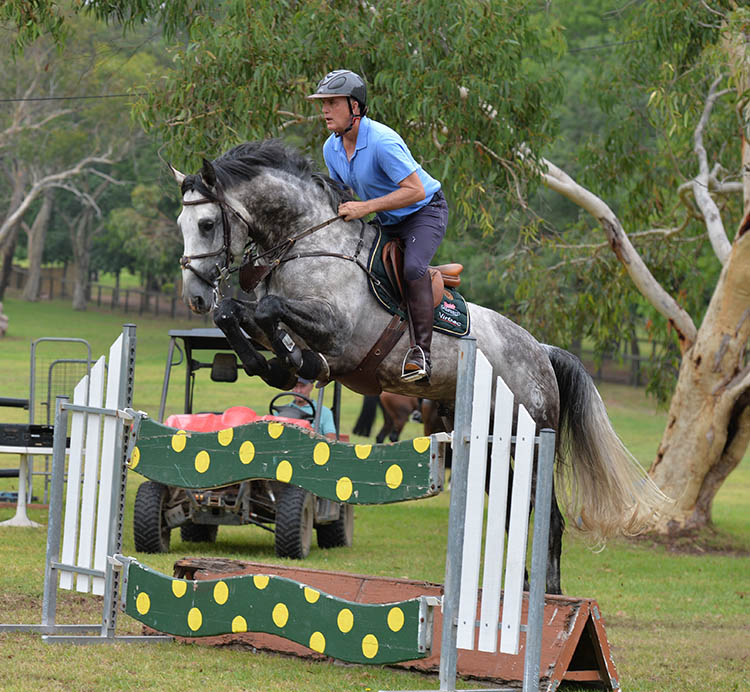
“I was lucky, before I got to go away for Europe, I had George for three or four clinics, so I really had the best trainer in the world, which we still have, but he actually prepared me for the World Cup final with Vivant and with Mr Currency really well. He also gave me advice whilst I was there, which was great.”
And the horse you have been riding at this clinic, Cassiago, the stallion? How far do you think he can go?
“I think he is the real deal. I think he is going to be a Nations Cup horse for sure. He is going to be a very nice 5-Star big fence jumper, loves the open paddock and he has no spookiness except for being a green horse. He loves the big jumps, he does the water jump really well. I am really looking forward to the next two years. I am not trying to get him into the Rio team but I would like to tag him along as a wildcard like Scandal was. She went to Europe as a wildcard, no pressure. I think Wiesbaden was her first show, six days off the plane, and she qualified for the Grand Prix. So that’s what I would like to do with Cassiago and it is also Gabi’s plan with her mare, Cristalline, as well. We would like to go to Europe and while the main teams are up doing the 5-Star shows we will head off to the 3-Star Nations Cups and do our training for that year, and get ready for World Championships in Canada in 2018.”
Update – plans changed and Cristalline went to the World Cup Final with Chris, was then sold, and Gabi won the last World Cup qualifier of the 2016/17 season on Cassiago
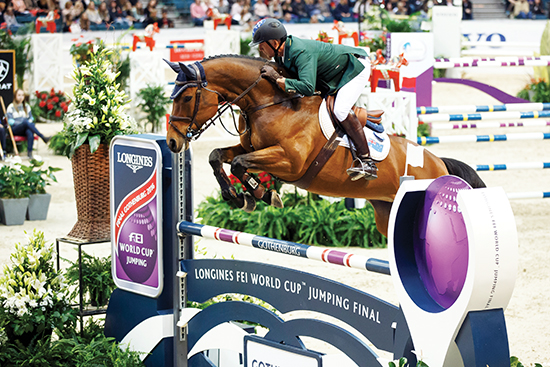
Longines FEI World Cup Final 1 – Goteborg 2016
© Hippo Foto – Dirk Caremans
25/03/16
Next the clinic
January in the Roycroft paddock has become something of a ritual for Roz and myself, and it is always a joy to sit there and discover just how George will manage to champion the same old truths, but always with a freshness of phrase and an immediacy that make it like you are hearing them for the first time…
Some things never change, like his dislike of modern, light weight brightly coloured stirrups, and his insistence that the angle of the stirrup is absolutely a right angle to the girth: “I’m not saying this because of fashion, I’m asking you to do it because it works. I’m not interested in fashionable, modern training.”
“In my country I keep them fearful of me and I send out a directive to the students that the must come with old fashioned stirrup irons. The old irons are more supportive than the modern ones – and secondly I have to ride your horses, and I hate riding with light, plastic stirrups. Thirdly, I need to see where the irons are, or I can’t teach them.”
(It should be pointed out that all George’s students at Mt White, had managed to locate good solid stainless steel irons, although some confessed they had to borrow from hackie friends.)
The rider’s seat is crucial, “you start with your seat a fork, with your crotch and your two seat bones, sit as close to the pommel as possible, with your butt a little to the back, and your back a little hollow. NOT with your back rounded and your butt under and forward. That is a real Australian problem, that rounded back.”
In this day and age of political correctness, George still doesn’t bother to mince his words: “If you think forward and the horse doesn’t jump forward, touch him with the spurs. Punish – reward, we train a horse with pain, little pain or big pain. When the horse resists the hand, then the rider’s hand resists in the same proportion. If the horse doesn’t accept the contact, shorten the rein, close the hand and slightly raise the hand. The horse has to take the contact, he has to accept hands, legs and seat.”
It was all about the balance of the horse:
“In the walk to trot transition, try to develop an uphill feeling. Forward and back in the transition, develop a concert of ease.” And even famous international riders don’t escape the master’s tongue, “Vicki NO, it’s like a wheel barrow, make him uphill.”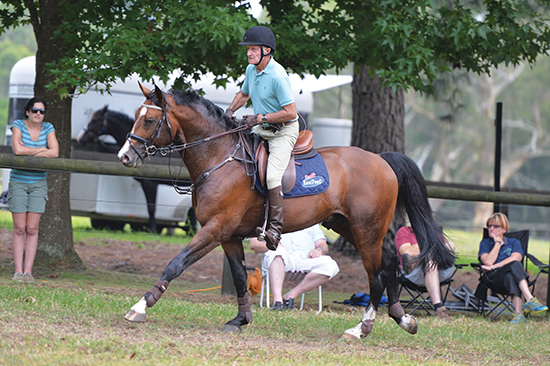
George and Baluga demonstrate weight down through the heels
But really the main message was not about seat, or hands, it was about feet, rider’s feet:
“Today there is too much seat riding and not enough leg riding.” And that is why that stirrup iron angle was important, why the heel has to be deep, that is the foundation of your position.”
On to another of George’s ongoing obsessions, cavalletti, and again, it required concentration on the part of the rider: “I want your body well forward, so the horse uses his back, an imperceptible release with the hand, so the horse can use his neck, a yielding hand and light and forward with your seat.”
Chuggy rides the three cavalletti beautifully: “The rhythm was beautiful, when you are forward with your body, you don’t interfere with the horse with your seat.” Rod McQueen also gets his share of praise: “That’s a beautiful line from the mouth to the elbow, that’s true contact, now the horse associates the cavallettis with complete confidence and relaxation, now he is submissive to the aids. How important it is to be forward – watch John Whitaker, watch the goddess of all, Beezie (Madden), they are forward with the horse MOST of the time.”
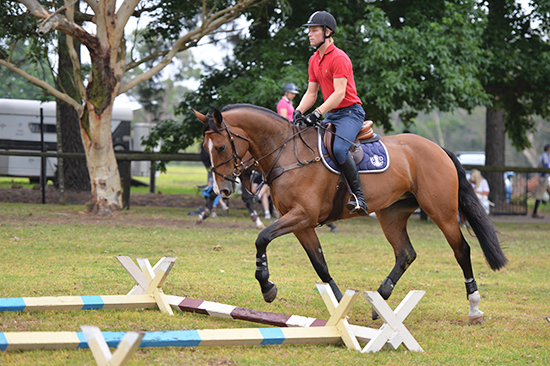 Rod and Vienna in rhythm over the cavallettis
Rod and Vienna in rhythm over the cavallettis
The love affair with the letter C continues – there’s Caprilli, and cavalletti, and counter canter. “I love counter canter, it is probably my favourite canter exercise:
“You keep the uphill tendency with your legs and hands, don’t try to pull the horse’s head down, shorter rein, hind leg under and wither up.”
After counter canter comes flying changes, and once again the emphasis was on the rider’s legs: “Don’t even think about the flying change in front Chuggy, exclusively from the legs.”
It was time for George to walk-the-walk and he selected Amanda Madigan’s Baluga.
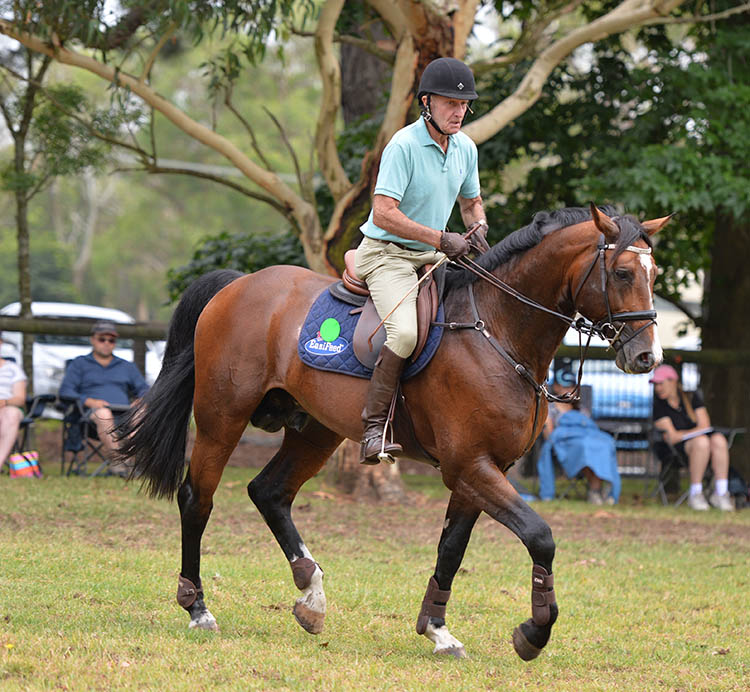
Next George tells us about rhythm
“See I am in rhythm, not fast, but regular and my body is forward and over the horse, over the centre of gravity. Uphill, not backwards, uphill in balance. Mobilize the shoulders with half turns, keep the horse’s neck straight and you can mobilize the shoulder. Not rough, but more and more on the hind legs, take and give, take and give. The outside rein is always dominant, the horse doesn’t have to be perfect but has to give me the hind leg. I don’t have to push because the horse is in front of my leg.”
“Now I canter, fixed seat, pliable arms. Leg to hand, what is lost today is self-carriage. My seat is not powerful and crushing, but lets the horse use his back. You get the horse uphill, not by sitting backwards, but by leg to hand.”
And halt – “and inside the halt, the horse has to be on the bit. The first lesson of the horse is impulsion, the horse is thinking forward and that is reflected in energetic paces.”
Woe betide the horse if it tried to pace: “Seventy percent of European horses are inclined to pace, but if you ride them leg to hand, there is no hint of pacing. The walk is the most basic gait, if I feel the horse getting lateral, I raise my hand and close my legs. I hate lateral walk, it comes from hand riding, get the horse round from leg to hand.”
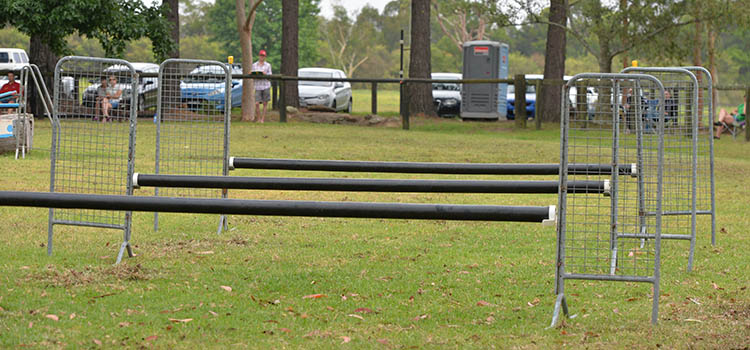
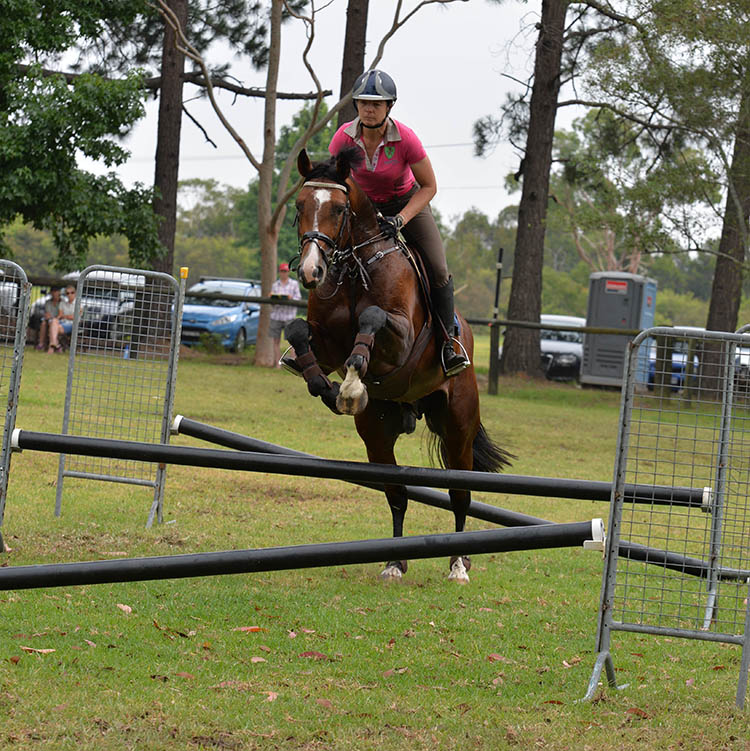
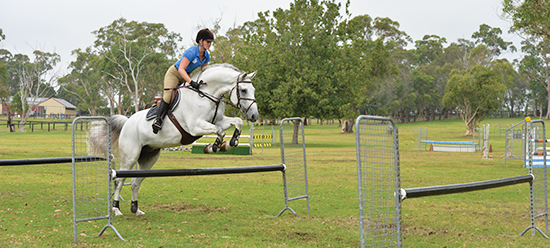 Bounce exercise, first jumped with one side of the rail down, Amanda and Baluga, then Jess and Casco
Bounce exercise, first jumped with one side of the rail down, Amanda and Baluga, then Jess and Casco
But before we got to George’s scary lines it was time for the horses to tackle a little bounce:
“This little bounce exercise is a good position. Check: are your eyes up? Is your body forward? Are your heels down? Are your hands alongside the neck? It is great to go back to the drawing board of position and it also trains your horse. There are some big, very hot horses that can’t tolerate bounces, so I don’t do bounces with every horse.”
And as always, the exercise wasn’t over when the exercise was over, after the grid riders were expected to do SOMETHING, anything, school the horse. It’s not surprising that George’s approach to training is in some ways very similar to Andrew McLean’s. Andrew always stresses that you are either training your horse to do what you want it to do, or you are training it to do what you don’t want it to do, and that every second you interact with the horse is important. George feels the same – “it’s how you lead your horse, how you tack it up, there’s no rest time, you are training all the time.”
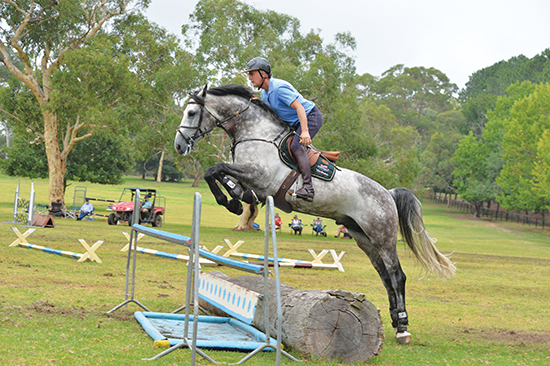 Chris and Cassiago show us the correct use of the showjumping whip
Chris and Cassiago show us the correct use of the showjumping whip
No-one is spared the criticism: “Jess keep the contact, you are the Queen of the Long Release, you don’t need the long release, have it in your tool box, but you don’t have to use it. Keep the connection, keep the feel of his mouth.”
But as George suggested earlier that great riders are only forward MOST of the time: “This time we are jumping a Liverpool off the in gate, away from the lorries, so it is a different fence. The first couple of times you ride it, it is okay to stay behind, to be defensive – but that is not the aim, not to be arse grabbers, or back pounders.”
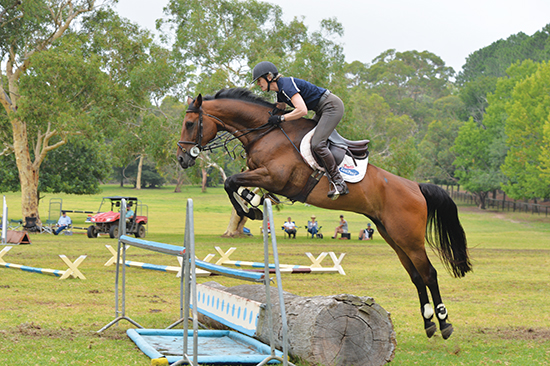 Vicki and Congo over the Liverpool
Vicki and Congo over the Liverpool
“What is important is our impulsion is ‘sufficient’, not over and not under, this fence is to educate the horse to sufficient impulsion. What do they need? Some, nothing, some a cluck, or a spur, you ride the horse with what that horse needs. Vicki that was beautiful, watch his top line, my holy grail is round, this fence makes a horse round. I teach you people to be Beezie-ish, beautiful riding.”
next another exercise
George had set up a line: triple bar, ‘nice seven strides’ to the double, then eight strides round a turn to a plank.
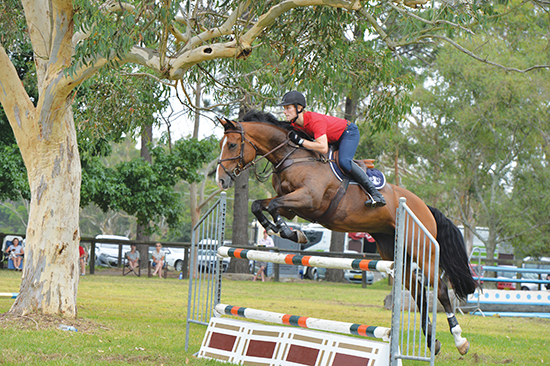 Rod and Vienna over the vertical under the trees
Rod and Vienna over the vertical under the trees
Jess Brown’s Casco has a stop going into the double, and George is delighted: “Careful is border-line chicken, that’s what made Gem Twist great, we like that. Where I placed that vertical under the tree spooks them, European horses are careful like that.”
For Chugg and Cassiago, the problem came at the plank: “Leg, leg, leg, leg, get him quicker, livelier to the fence.”
And praise for Vicki and Congo: “That’s how to go to that plank, not defensive, to it.”
Then there was a new challenge: water to vertical, right hand turn to oxer, oxer, oxer, to vertical plank. All the distances were short, very short. Water, 5 to vertical, right hand turn, 4 to oxer, 4 to oxer, one stride, oxer, 3 to the plank.
And this time Jess nailed it. “Jess that was beautiful, that was Beezie-ish.”
Like we said earlier, for all George Morris is one of the most articulate trainers of all time, a lot of the time, he lets his fences do the talking:
“It is the construction of the fences that is important – not trapping the horses, but it is trapping the horses in a very constructive way for the horse. These oxers are very airy and very square and they have false ground lines, they are gentle traps. If the horse is ridden well, if the horse has sufficient capability, the horse teaches himself. Let the horse do the work… When Beezie Madden walks around a show ground, you wouldn’t notice her in a crowd of two, but that is how she rides. Jeroen Dubbeldam is like Beezie, head down, mouth shut and they outride the world.”
“The others, with the dealer seat, they are often good horsemen but they are dealers and they hold the horses together, they carry the horse with their hand. This system I teach, teaches the horse to carry us, teaches the horse to think for us.”
After the session we asked Rod McQueen:
Why do you think we have this problem in Australia where we have horses that are quite advanced but they still have contact issues? I can sit at the Bundeschampionate and watch a class of one hundred 6-year-olds and not one of them thinks about coming above the bridle? “My opinion is it is the education. I was very lucky from a young age to have Chris and Helen Chugg and Amanda Madigan, always keeping an eye on what I was doing. In the transition from the Chuggs to Rod and Cathy Brown, it was very much, ‘yes you can do it that way but you can also do it this way and get the same result.
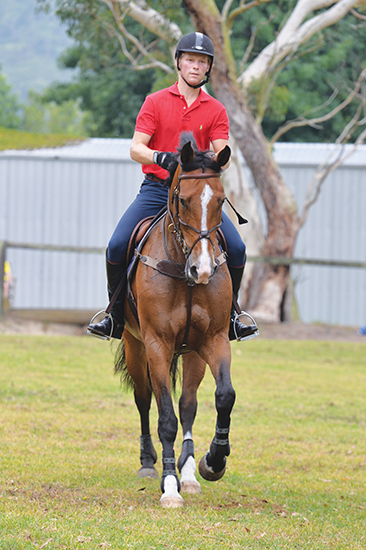 Did your horse feel different after George had ridden her? “Definitely. I would say more towards the end where I adjusted to the new feeling, she came back, she waited, she didn’t fight and actually waited, especially with that exercise with the plank up to the combination I found it the most improved. Normally at a show on a line like that I might have an argument mid-way down and it would inhibit what happens through the combination, but definitely now there is a huge difference and I have something to work on.”
Did your horse feel different after George had ridden her? “Definitely. I would say more towards the end where I adjusted to the new feeling, she came back, she waited, she didn’t fight and actually waited, especially with that exercise with the plank up to the combination I found it the most improved. Normally at a show on a line like that I might have an argument mid-way down and it would inhibit what happens through the combination, but definitely now there is a huge difference and I have something to work on.”
That was a little like the wall of death the last line you jumped? “It was, I was just hoping to come out the other side on all four feet!”
But he is interesting the way he uses his lines isn’t he? He talks a lot, but his fences talk a lot! “He said yesterday and the day before with the short four and then the three, or the four and four, it teaches the horse to help the rider. And the horse to help himself. Interesting, he is very good.”
Breeding jumpers? Think about the stallions available from International Horse Breeders www.ihb.com.au Like Kanndarco
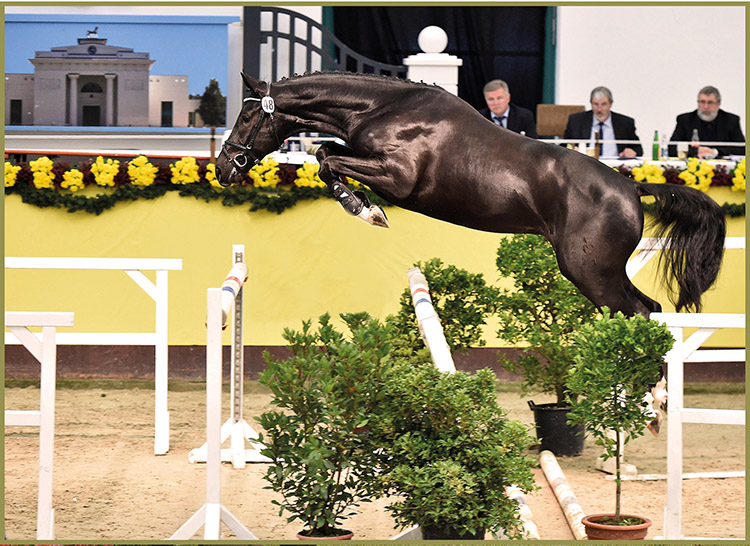
VIEW PART TWO HERE:
http://www.horsemagazine.com/thm/2015/05/george-morris-part-two/

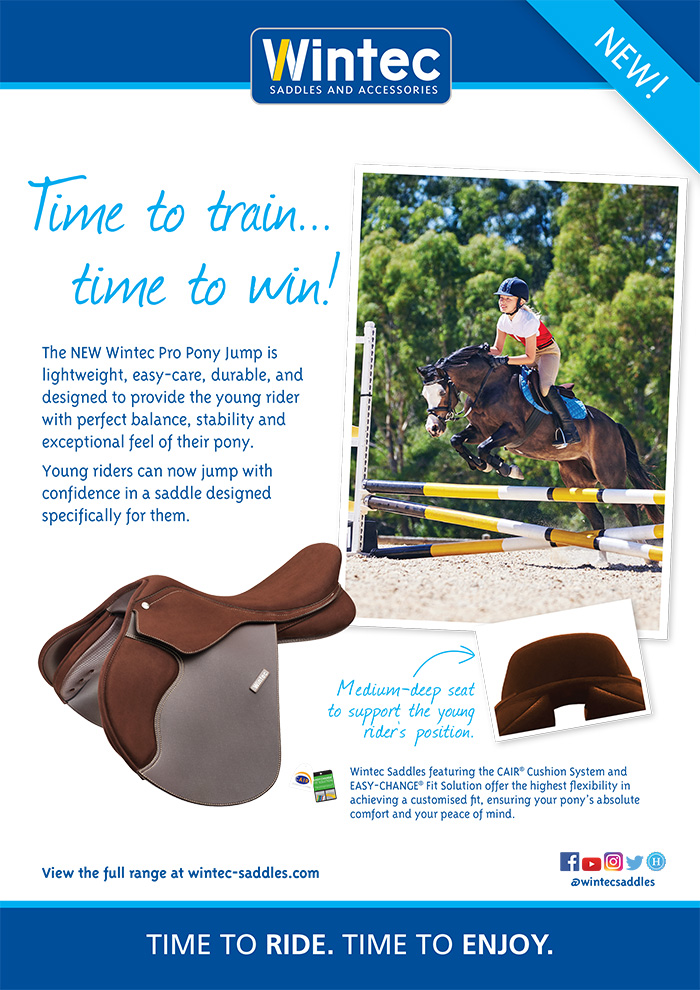
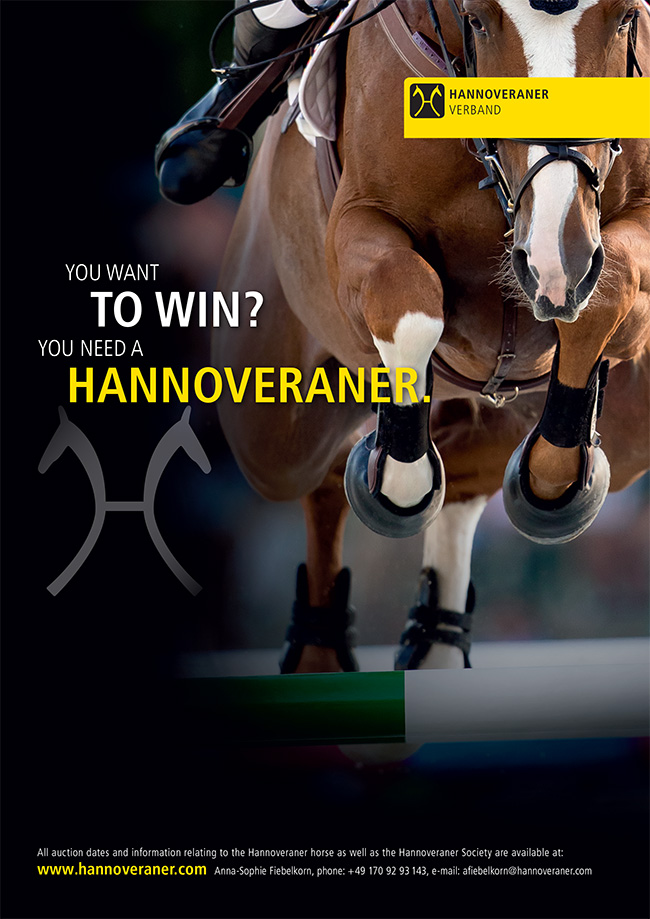

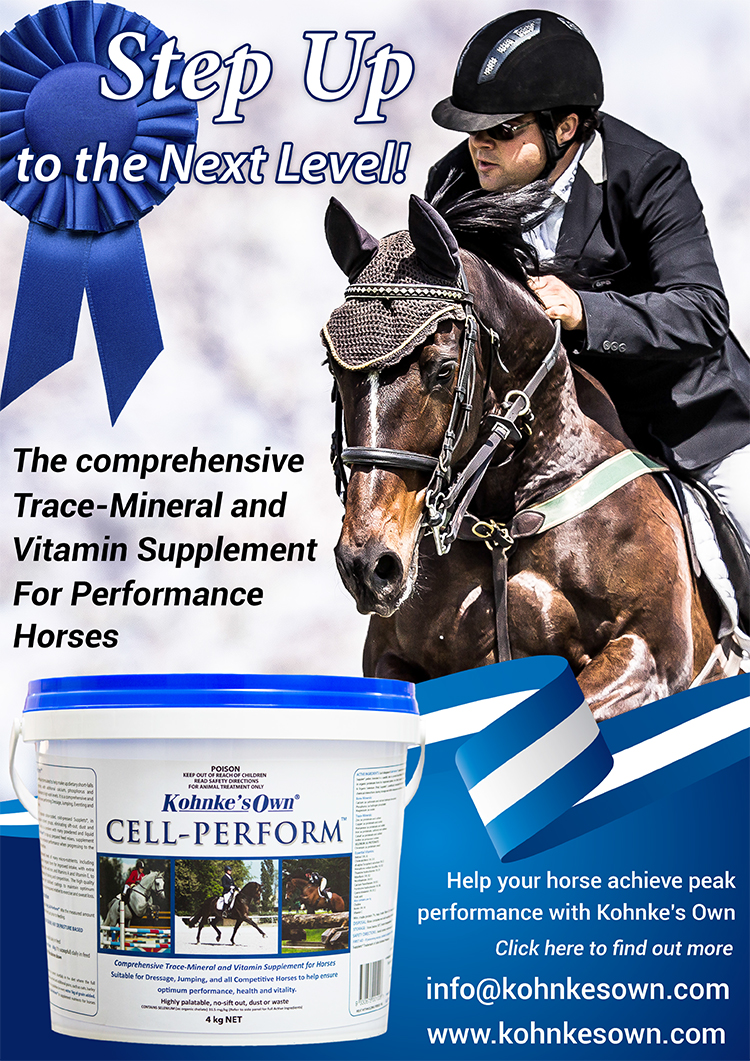
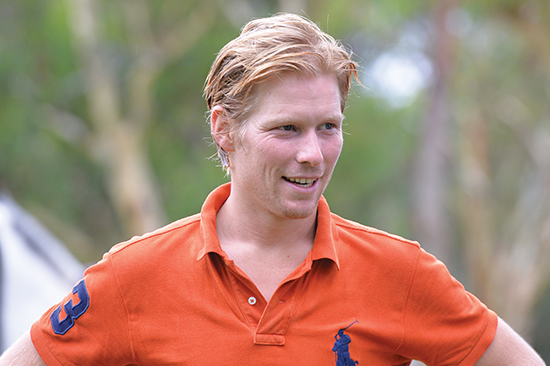
We drive a 5 hour round trip weekly for lessons with George Sanna and he will often refer to George Morris and his clinics. There are so many coaches around us in Sydney’s south but that old school correctness is working and well worth the trip. Thanks to both Georges for the life long lessons.